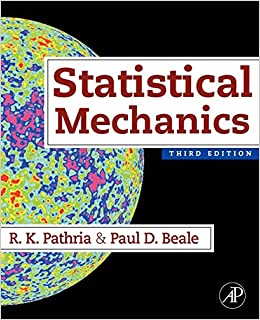The partition function of the system may be written as (sum_{L} exp f(L)), where [ f(L)=ln N
Question:
The partition function of the system may be written as \(\sum_{L} \exp f(L)\), where
\[
f(L)=\ln N !-\ln (N p) !-\ln (N q) !+\beta N\left(\frac{1}{2} q J L^{2}+\mu B L\right)
\]
Using the Stirling approximation (B.29), we get
\[
f(L) \approx-N p \ln p-N q \ln q+\beta N\left(\frac{1}{2} q J L^{2}+\mu B L\right) .
\]
With \(p\) and \(q\) given by eqn. (1) of the problem, the function \(f(L)\) is maximum when
\[
-\frac{1}{2} N(1+\ln p)+\frac{1}{2} N(1+\ln q)+\beta N(q J L+\mu B)=0 .
\]
Substituting for \(p\) and \(q\), the above condition takes the form
\[
\frac{1}{2} \ln \frac{1+L}{1-L}=\beta(q J L+\mu B) .
\]
Comparing this with eqn. (12.5.10), we see that the value, \(L^{*}\), of \(L\), that maximizes the function \(f(L)\) is identical with \(\bar{L}\).
The free energy and the internal energy of the system are now given by
\[
\begin{aligned}
& A \approx-k T f\left(L^{*}\right) \approx N k T\left(p^{*} \ln p^{*}+q^{*} \ln q^{*}\right)-N\left(\frac{1}{2} q J L^{* 2}+\mu B L^{*}\right), \\
& U \approx-\frac{1}{2} N q J L^{* 2}-N \mu B L^{*},
\end{aligned}
\]
whence
\[
S \approx-N k\left(p^{*} \ln p^{*}+q^{*} \ln q^{*}\right)
\]
Step by Step Answer:






